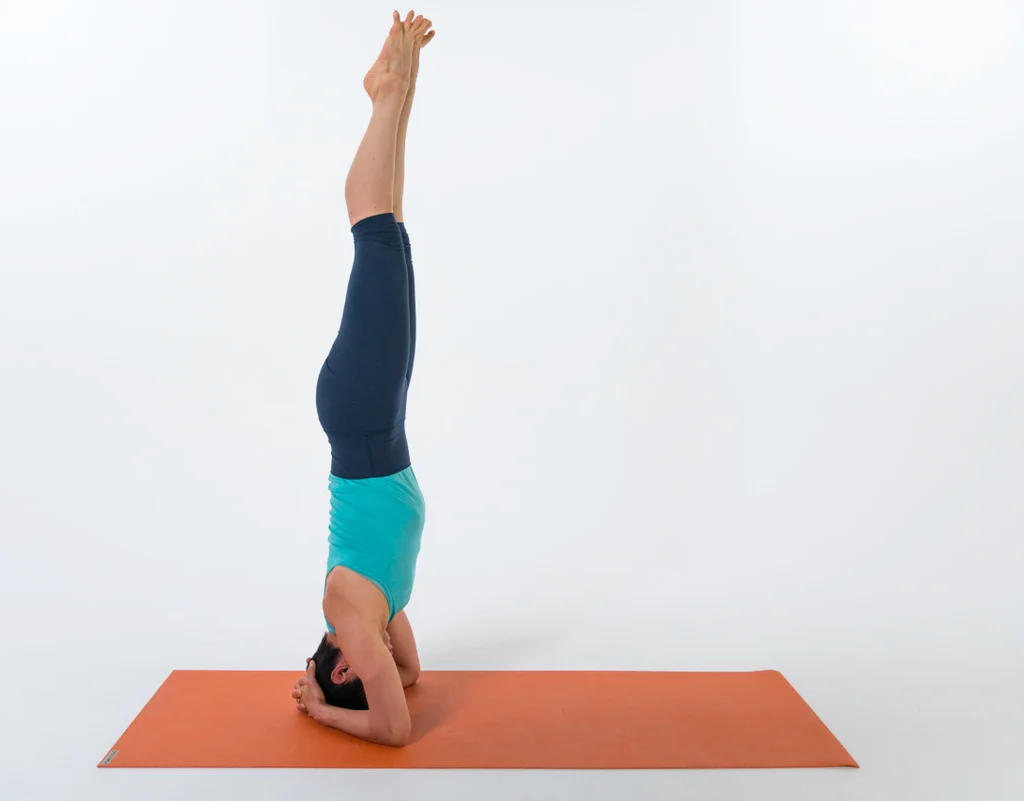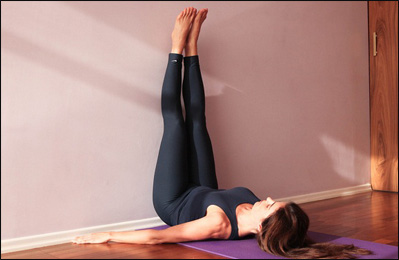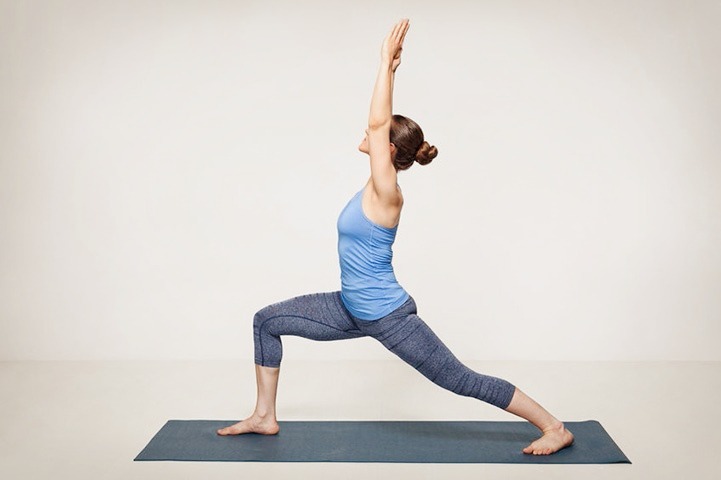What is Pyramid Pose or Parsvottanasana?
“Parsva” — meaning “side” or “flank” ; “Ut” — meaning “intense” ; “Tan” — meaning “to stretch” ; “Asana” — meaning “pose”
Pyramid pose or Parsvottanasana encourages balance, body awareness, and inspires confidence.
Pyramid Pose is one of those poses where you can really see the results of consistent practice. It’s also a great warmup for any hamstring intensive poses that you might have planned.
With this tiny intro, let us dive into this easy guide to Pyramid Pose:
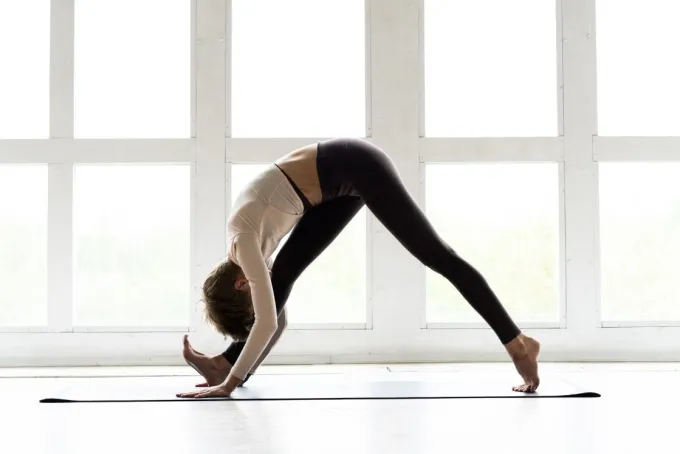
Instructions for the Pyramid Pose
This pose is sometimes confused with the similarly named Extended Side Angle Pose (Parsvakonasana), which also stretches the sides of the body. However, Parsvottanasana stretches both sides of the body equally and at the same time; Parsvakonasana stretches each side separately.
Here is how you can do it:
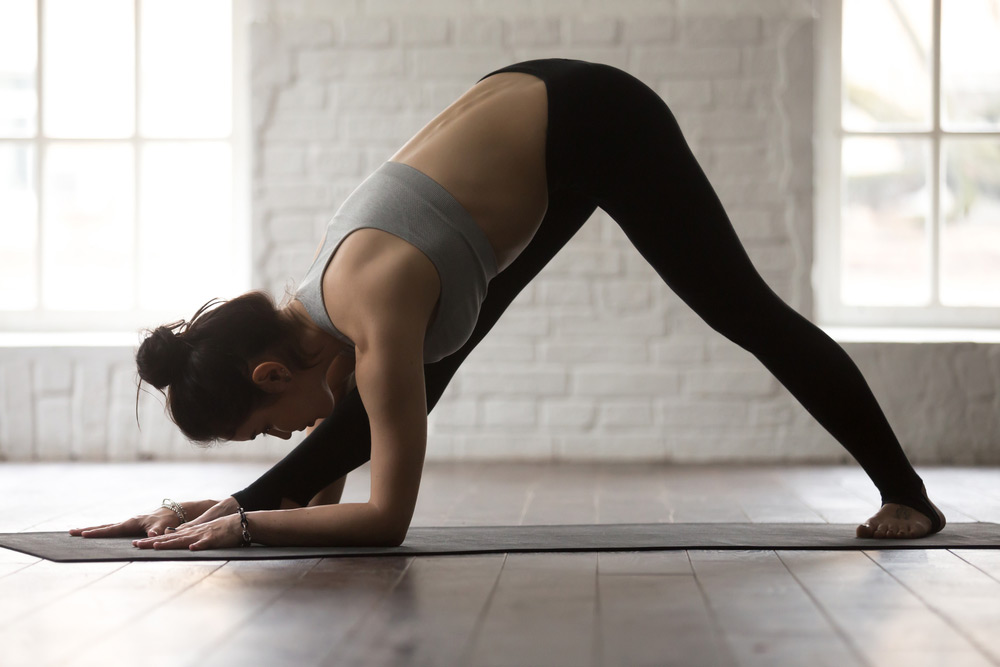
- From High Lunge pose (with left foot forward), step the back leg forward enough to straighten both legs. Keep the back foot flat on the floor with the toes facing forward.
- Round the spine pressing the forehead towards the left knee, press into the heels and press the back of the knees towards the back wall.
Breathe and hold for 3-8 breaths. - To release: either step the right foot back and bend the left knee into lunge, or inhale the arms out and up with both legs straight.
- Repeat on other side.
Pyramid Pose is a standing yoga posture that combines the benefits of three major movements: Forward bending, backward bending, and balancing. It requires intense focus and a very calm mind to balance and stay in correct alignment.
You can also find the detailed instructions in the following video made by Yog4Lyf Yoga Instructor, Mr. Harsh:

Benefits
Included in yoga sequences for sportspeople, this asana relieves stiffness in the legs and hip muscles and makes the hip joints and spine elastic. Here are some of the main benefits of this pose:
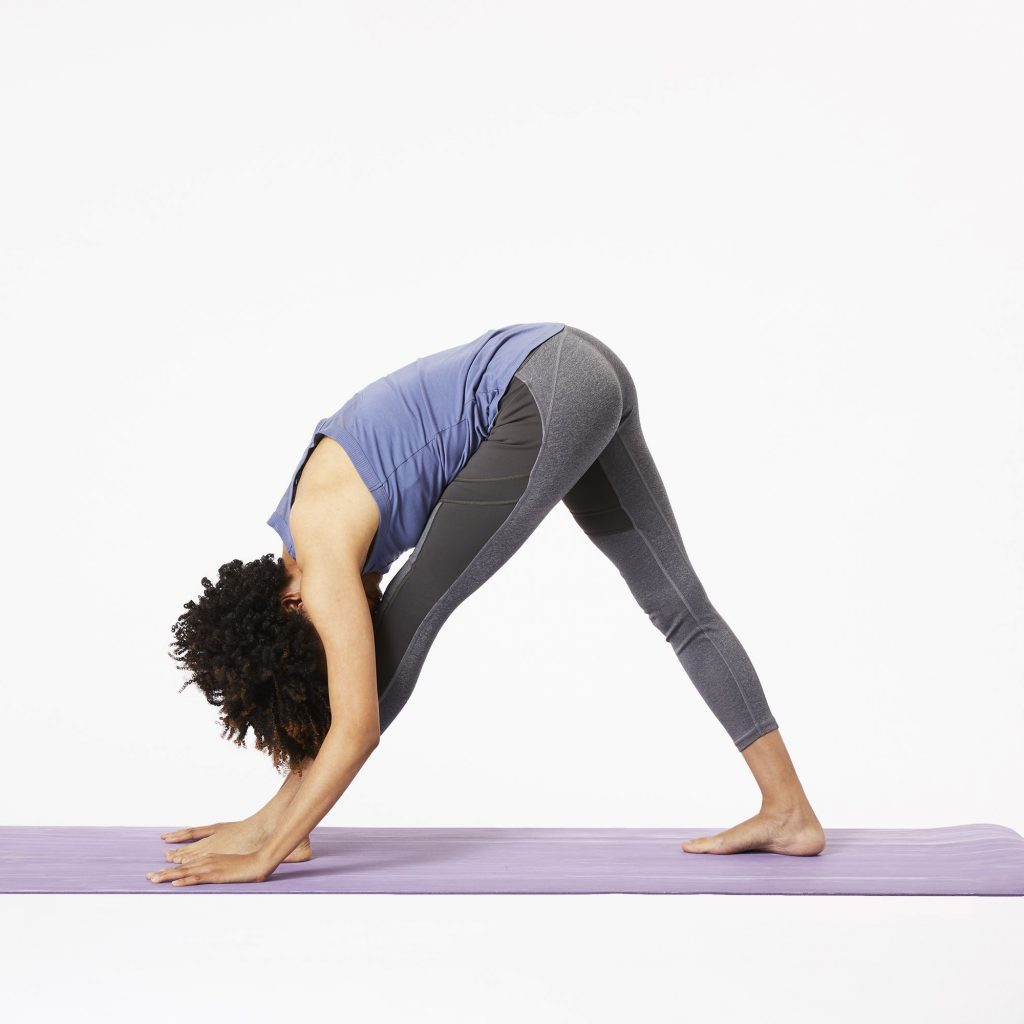
- Stretches Hamstring Muscles
Pyramid pose is a great way to stretch the hamstring muscles. When these muscles are tight, it can be difficult to move around and do everyday activities. This pose can help to loosen them up, making it easier to move around. - Elasticity in Spine and Hips
Parsvottanasana also helps to make the spine and hips more elastic. This can help with mobility in these areas and prevent pain.
- Energizing, De-stressing, and Relaxing
Parsvottanasana enhances the blood circulation towards the head while the elongated spine creates spinal toning which relaxes the nervous system. Moreover, given the intensity, the deep tissue stretch in this pose opens up the blockages in the body, making room for the free flow of prana (energy). - Removes Stiffness
It also opens the chest and shoulders, which can be beneficial if you have any stiffness in your shoulders or back. - Improves Body Balance & Body Awareness
Your almost entire body gets stretched in Parsvottanasana but every minute stretch is voluntary. This means that not a single muscle is stretched with the flow. If you practice this asana for a longer period of time, you will end up improving your body balance and awareness. - Stimulates Your Reproductive Organs
If you are suffering from menstrual cramps, this asana can reduce your pain. When you bend your body forward, your abdominal region gets contracted which stimulates your reproductive organs. This gives a massaging effect and relieves the pain caused by menstrual cramps. - Calms Your Mind
To stay in the Parsvottanasana for a long period of time, you need a high level of patience and mental composure. By practising patience, you bring your nerves and brain back in control.
With a unique combination of balance and surrender, this posture is ideal to calm the mind. It also brings about great benefits for the abdominal organs, and aids in digestion.
Contraindication
Here are some precautions you need to take while doing this pose:
- If you have a back or shoulder injury, hold each elbow with the other hand instead of the reverse prayer position. Or, you can place your hands on your hips.
- Do not lock the knee joints. Bend the knees only slightly, if the hamstrings feel too strained.
- Pregnant women should avoid this asana.
- Since this is a balancing asana, do not keep your eyes closed in the final position.
Also, if you have any medical concerns, talk with your doctor before practicing yoga.
Conclusion
The pyramid Pose is considered a base pose as pyramid pose variations can be derived from this pose.
It helps boost energy in the body and hence can be included in flow yoga sequences. Do share this easy guide to Pyramid Pose with your friends and family to encourage them into doing a healthy task.
Happy Yogaing!

